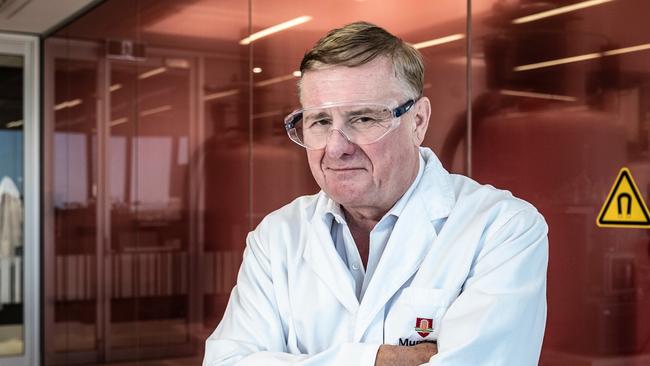Coronavirus time bomb ‘could cost billions’
New research finds the coronavirus leaves a mixed ‘biochemical signature’ of diabetes, liver dysfunction, acute inflammation and increased cardiovascular risk.

Lung disease may be the tip of the iceberg for COVID-19 sufferers, with new research finding the virus leaves a mixed “biochemical signature” of diabetes, liver dysfunction, acute inflammation and increased cardiovascular risk.
Samples from COVID-19 patients studied in Perth suggest that “recovered” patients emerge with signs of a “Post-COVID Syndrome” affecting multiple organs. It includes people who had mild or minor lung effects.
The findings are supported by new data from British samples sent to Perth from COVID patients at Addenbrookes Hospital in Cambridge.
The Australian National Phenome Centre at Murdoch University is working with the Cambridge team to follow the long-term recovery and health impacts of COVID-19 patients.
ANPC has identified that biochemical changes show up in blood plasma, and patients can have signs of diabetes, liver damage or risk of heart disease.
Murdoch University professor and ANPC director Jeremy Nicholson said the centre had identified a “biochemical signature” of being COVID positive that is not directly connected to severity of lung disease.
“It turns out there is an incredibly strong signature of COVID-19 positivity, the strongest one I’ve seen in 30-plus years of metabolic research on many diseases,” he said.
“People are concentrating on the front end of this disease, detection and a cure, and on the serious lung problems that occur in some patients. But millions of people will have the virus, many will not know it, and some may have serious long-term effects on their health as a result of infection.”
He predicts that if the long-term effects of COVID-19 are anything like SARS, which affected thousands of people, not millions, “then the long-term healthcare burden could run into the billions of dollars worldwide.”
Professor Nicholson said infected people’s biochemistry showed diabetes, liver dysfunction “and a massive change in the lipoproteins identified as relating to coronary artery disease and cardiovascular risks.”
“Even though only a small proportion of the people we studied had known diabetes, during the course of their COVID-19 encounter most developed clear signs of diabetes. We don’t yet know if it’s the gestational type that reverses or whether it sticks with you.”
He said the multiple adverse effects were linked to microvascular damage that could affect small blood vessels.
Chris Smith, from the Cambridge Institute of Therapeutic Immunology and Infectious Disease, said the study “proves we can detect COVID-19’s legacy and highlights some long-term metabolic impacts of infection”.
Professor Nicholson said the ANPC was working on a diagnostic test that could be applied to the screening of individuals taking part in vaccine clinical trials.



To join the conversation, please log in. Don't have an account? Register
Join the conversation, you are commenting as Logout